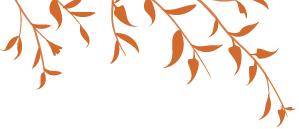Escola de Capoeira Angola Cortiço do Abelha
Gold Coast - Australia
The Bee Shelter

Escola de Capoeira Angola Cortiço do Abelha
Gold Coast - Australia
The Bee Shelter
The key objectives of Capoeira Angola training are:
+Keep physically and mentally fit;
+Express yourself through art;
+Exercise multi-tasking and coordination;
+Learn about a different culture / language;
+Look into ourselves as human beings;
+Encourage a debate about a holistic learning; and
+Community engagement;
Brazil, similarly to Australia, has grown from a multicultural environment. People from different nationalities migrated to Brazil after 2nd world war searching for a new life in a country famous for being receptive and friendly to foreigners. There are mainly two Capoeira styles practiced world wide and they are called respectively: Angola (Traditional dance from Bahia) and Regional (Regional fight from Bahia).
Angola is Fun, Dance and Art, but the benefits of its practice go beyond the physical aspect. It helps to develop self-confidence and higher self-esteem, to handle stressful situations in a wiser way, and brings people from different backgrounds together to play the same game. During the training everyone is treated equally and encouraged to play music, sing and assume certain degree of leadership. It is an effective approach to violence prevention widely used by Non-profitable organisations in underprivileged areas worldwide.
The Angola game is a ritualised mock combat that is played in two within a circle of people, known as a roda (pronounced "hoda"). Note that the Angola game, differently from other types of capoeira, is non-violent and there are no blows or fast sweeps that may cause injury to an opponent. The Angola name was added to distinguish the traditional capoeira from other capoeira styles declared as fight. Angola reinforce the African roots part of Brazilian culture like samba, happiness and multi-cultural environment.
The objectives of the game are not explicit, and are largely dependent on the outcomes that are desired by the two players and the person who is in charge of the dancing (fight simulation) circle holding the reference instrument that commands the dance itself, the Berimbau. The Master is an important reference in every Capoeira group because he represents the leadership achieved by study, experience, dedication and the recognition from his community, regarding the efforts to contribute with the social aspect. The game (the dance) is always guided by music, which is played by people form one side of the circle. The orchestra is composed by the angola players (angoleros), rather than specific band members. The leadership can be shared through music as the Master might nominate an expert angolero to be in charge of the roda, holding the most important instrument, the Gunga Berimbau. The Berimbau beat dictated the rhythm of the game accelerating, slowing, and even stoping the dance just changing beat.
There is no official winner or loser of the game. The performance of the angolero is measured by his flexibility and awareness during the game. He must be capable to extract the best skills from his partner during the dance showing a beautiful game analogue to a dialogue. The simulated attacks are questions and the defences are answers to those questions. The dialog will be carried until the Berimbau commnads to stop, or until one of the angoleros returns to the starting point in front of the orchestra, shake hands with his partner and say that he is already satisfied with the conversation. A kind of “I give up, you win”. This practice is very effective to help people to keep calm in adrenalin situations, exercise mercy, increase their self-control, awareness about their bodies and own feelings. We exercise in every class to stay calm during the Angola game. It can help energetic kids to withdraw dangerous situations in real life, emphasising the situations itself, discussing why fighting is never justified, and teaching them to keep calm protecting themselves.
The self-control is practiced during the training sessions by studying the movements and using non-violent strategies to force the opponent off-balance, or to put them in a position where they could not escape (sort of a "checkmate" moment), at the same time not letting the opponent do the same to them.
Capoeira Angola training increases self-control, self-awareness, patience, opens alternative communication channels through dance and exercise creativity through music. Examples of friendship, courtesy, respect and mercy are commonly subjects emphasised by Capoeira Angola social projects all around the world.
Supported by:


